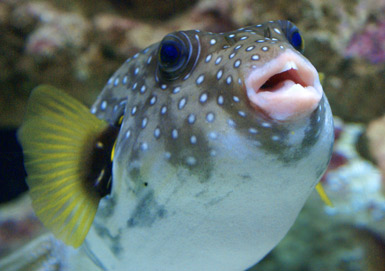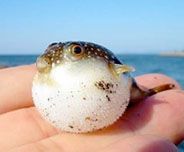www.towerofbabelfish.com/the-method/spaced-repetition/”Anki, although I’ve had students who didn’t take my No Translation advice and found that they had serious difficulties remembering the translations for certain words even with Anki).
Two, let’s look at what happens when you see this:
First, you think “house”. Then, if all goes well, you think “the word for house in French is ‘maison’. I think it’s feminine. La maison”. No problem, right?
Well, yes and no. If speaking French was a matter of being shown a picture of a house and you having to regurgitate ‘la maison’, then you now speak French. Since speaking French is a bit more complex, your translating will only get you so far. Even with a simple question like “Is there a dog in that house?”, you will run into serious issues.
“Est-ce qu’il y a un chien dans cette maison?” translates to
“Is it that it there has a dog in this house?”.
There is a limit to translation. You can make your translations more and more complex, and you can get very fast at them, but it will never be as fast or as fluent as simply thinking in the language. Why train
↔
When you could instead train:
↔
Doing this allows you to instantly think the word “maison” as soon as you see the picture, and that’s your goal, isn’t it? You’re not trying to teach yourself to be a translator, you’re trying to teach yourself to speak French. Speaking French involves looking at objects and knowing, instantly, how to describe that object in French. It involves thinking about the existence of a dog in the house and immediately thinking “Est-ce qu’il y a…”. Translation is too slow - you need words that come instantly to your tongue.
There’s a trick here, of course. You need some language to get more language, and if you’re an absolute beginner, you don’t have the language you need. You may not even have the alphabet you need; if your first word in Russian is “Здравствуйте!”, you don’t yet have any of the tools you need to learn what that means, and you can bet you’ll be running to an English-Russian dictionary. The trick is to use English as a temporary crutch, and wean yourself off of it as soon as possible, usually within a couple of months (although you may still need that dictionary from time to time when writing about new topics).
You use English to find the words you need. We’ll discuss frequency lists and choosing your vocabulary later on, but to go back to our house example, if you’re walking along the street and see a house, and realize that “house” is not yet in your French vocabulary, you will need to go home and look up “house” in a French-English dictionary in order to get “la maison”.
Here’s where No Translation kicks in. When you put this word into Anki, you need to figure out how to remind yourself of the meaning of the word without any English. For ‘la maison’, this is pretty easy. Type in “la maison’ in Google images, and you’ll find a whole bunch of appropriate houses. For abstract concepts like “truth”, this gets more complicated. As I said above, you need some language to get language, and so you’ll need to either wait until you’ve picked up enough French words to write a simple definition, or you’ll have to use more abstract images. Here’s an early chain of words that might build you up to “truth”:
↔
↔
↔
(mensonge = “a lie”, pas = “not/no”, “pas le mensonge” = “not a lie”, “la vérité” = “the truth”)
There are a few important things going in in this example. First off, the Pinocchio reference could refer to a bunch of things - a liar, lying, a puppet, a fairy tale. Because I chose the image for “a lie”, I know what I’m referring to. This is a key point; you either have to make your own cards, or you need to know exactly what the images are referring to ahead of time. Anki takes care of memorization, but it’s not ideal for learning a concept the first time. Each time you see a card in Anki, it should remind you of a learning experience you already had.
Second, I had to understand some grammar concepts (how to negate a concept using “pas”) before I could write it. You’d learn this in the first chapters of a French grammar book (which you should own). After reading the section on “pas”, if I wanted to teach myself how to use it correctly, I could make this grammar exercise:
→
Last, you’ll notice I’m building a network of interrelated words. My definition of vérité depends upon my definitions of pas and mensonge. This is exactly what we’re looking for; the more connections between words, the better. This is what words, at their core, really are - connections between other words. Your concept of lies should contain all sorts of associations - from Pinocchio to that politician you can’t stand to some embarrassing experience as a kid – all of these associations strengthen and give meaning to that little word, and you’re trying to build those connections manually with these new words in a new language. The concept of “mensonge” in French should have new associations - French ones - and some of those associations should be with words like vérité and pas (and maybe Pinocchio).
I go into more detail in the book as to how you practically do this with every type of word and concept, but the basic idea is this:
- Use pictures as much as you can.
- For abstract words, combine pictures and simple definitions.
- If you can’t write a simple definition, skip the word until later, when you can.
- For grammar, just copy the fill-in-the-blank structure you’ll find in any grammar workbook. 1-2 examples of each grammar rule are enough; Anki will take care of putting it into your head.
Some relevant blog posts:
- Learning grammar and abstract words without translation
- Translated Google Image links for Language Learning
- Preposition Images for Anki
- Reader Q&A: On Grammar
- On dealing with non-phonetic languages and homophones
- On dealing with abstract words
- The Best Source of Words in Context: Google Images + Google Translate" href="http://www.towerofbabelfish.com


